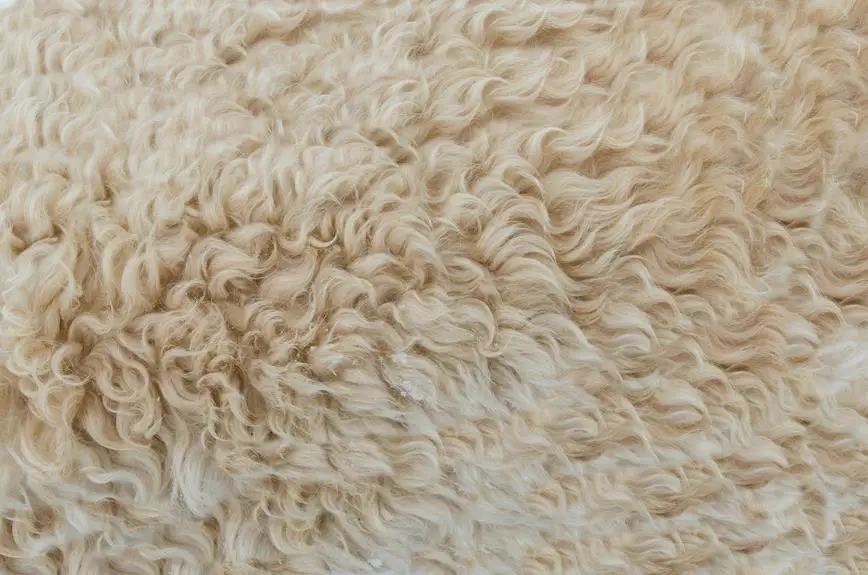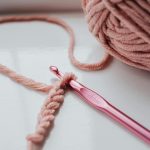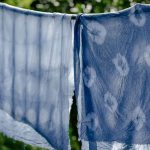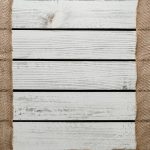When you're navigating the world of fabrics, understanding the differences between cambric and muslin can be essential for your projects. Both materials have their unique strengths and applications, but which one suits your needs better? Cambric is known for its crisp finish and durability, while muslin offers breathability and a softer texture. As you consider their characteristics and uses, you might wonder how to choose the right fabric for your specific purpose. Let's explore these distinctions further to help clarify your options.
Table of Contents
Overview of Cambric
Cambric is a lightweight, finely woven fabric that's often made from cotton or linen, making it a popular choice for delicate garments and accessories. You'll find it used in everything from shirts and blouses to table linens and handkerchiefs. Its smooth finish and crisp texture lend an air of elegance, perfect for both casual and formal occasions.
When you touch cambric, you'll notice its soft feel, which makes it comfortable against your skin. Its breathability ensures you stay cool, especially in warmer weather. Plus, cambric holds dyes exceptionally well, resulting in vibrant colors that won't fade easily.
One of the standout features of cambric is its durability. Despite its delicate appearance, it can withstand regular washing and wear, making it a practical choice for everyday use. You can easily care for it by machine washing on a gentle cycle, followed by a low-heat tumble dry.
Overview of Muslin
Muslin is a versatile fabric that's commonly used for a variety of applications, from clothing to home textiles. You'll find it in everything from lightweight dresses to curtains and tablecloths. Its origins date back to ancient times, with roots in the Middle East and India, where it gained popularity for its softness and breathability.
One of the great things about muslin is that it's usually made from cotton, so it's both durable and easy to care for. You can wash it without worrying too much about shrinking or losing its shape. Because it's relatively inexpensive, it's a popular choice for sewing projects, especially for beginners looking to practice their skills.
Muslin also comes in different weights and weaves, allowing you to choose the right type for your specific needs. Whether you're creating mock-ups for garments or using it as a lining for quilts, muslin serves as a reliable fabric that won't let you down.
Key Characteristics of Cambric
When you explore cambric, you'll notice its unique fabric composition and tight weave that set it apart.
This lightweight material is often chosen for specific applications, from delicate garments to home textiles.
Understanding these key characteristics can help you appreciate why cambric remains a popular choice in the textile world.
Fabric Composition and Weave
Characterized by its fine, closely woven texture, cambric offers a smooth finish that enhances its versatility in various applications. This fabric is typically made from cotton, though you might also find blends that include linen or synthetic fibers. The high thread count contributes to its durability, making it resistant to wear and tear, while still remaining lightweight.
The weave of cambric is a plain weave structure, which means it's created by alternating the warp and weft threads in a simple over-and-under pattern. This tight weave not only provides strength but also gives cambric its signature crispness and slightly lustrous appearance. When you touch cambric, you'll notice its soft feel, which is a result of the finishing processes it undergoes, like calendering, that smoothens the fabric surface.
Moreover, cambric can be easily dyed, allowing you to choose from a wide range of colors and patterns. Its ability to hold shapes well makes it a popular choice for garments and home textiles alike. Overall, understanding these characteristics can help you appreciate why cambric stands out among other fabrics.
Typical Uses and Applications
Cambric's fine texture and durability make it a popular choice for a variety of applications, including clothing, bedding, and accessories. You'll find it particularly appealing for items where softness and resilience are essential. Its lightweight nature allows for comfortable wear, while its tightly woven structure ensures longevity.
Here are some typical uses for cambric:
- Shirts and blouses: Its smooth finish makes it ideal for tailored garments.
- Bedding: Cambric sheets and pillowcases provide a soft touch against the skin, enhancing sleep quality.
- Lining: Use cambric as a lining for dresses or jackets to add a layer of comfort and quality.
In addition to these, cambric is often used in children's clothing due to its hypoallergenic properties.
Whether you're making something for yourself or a loved one, you can trust cambric to deliver both style and functionality.
With its varied applications, this fabric is a reliable choice for anyone looking to create or invest in quality textiles.
Key Characteristics of Muslin
When you look at muslin, you'll notice its unique fabric weave structure that sets it apart from other materials.
This versatile fabric has a range of typical uses and applications, making it a favorite among crafters and designers.
Let's explore what makes muslin so special and how you can use it in your projects.
Fabric Weave Structure
Muslin features a loose, plain weave that allows for breathability and a soft drape, making it ideal for various applications from clothing to home textiles. Its weave structure plays a significant role in its key characteristics, contributing to its versatility and functionality.
Here are some essential traits of muslin's weave structure:
- Breathability: The loose weave promotes airflow, making it comfortable to wear in warm conditions.
- Softness: Muslin's texture is gentle against the skin, which is perfect for clothing, especially for babies.
- Lightweight: The airy fabric doesn't add bulk, making it easy to layer or use in various projects.
Understanding muslin's fabric weave structure helps you appreciate its unique qualities. Its plain weave not only enhances its softness but also ensures that it remains lightweight and functional.
Whether you're sewing a dress or crafting a backdrop, knowing these characteristics will guide you in choosing the right type of muslin for your needs.
Typical Uses and Applications
You'll find muslin's versatility shines through in its wide range of uses, from clothing and home décor to art and craft projects. This lightweight fabric is soft, breathable, and easy to work with, making it a favorite among DIY enthusiasts and professionals alike.
Here's a quick overview of some of muslin's typical applications:
| Application | Details |
|---|---|
| Clothing | Ideal for summer garments, linings, and babies' clothes due to its lightweight nature. |
| Home Décor | Used for curtains, tablecloths, and cushion covers, adding elegance without overwhelming a space. |
| Art & Crafts | Perfect for painting, dyeing, and pattern-making, as it readily absorbs colors and holds its shape. |
With its ability to blend seamlessly into various projects, muslin stands out as a practical choice. Whether you're sewing a dress or crafting a unique home accent, this fabric can elevate your creations. You'll love how muslin adapts to your needs, making it an indispensable material in your toolkit.
Common Uses for Cambric
Cambric is often used for lightweight garments, linings, and delicate home textiles due to its soft texture and smooth finish. You'll find it especially appealing when crafting items that require a gentle touch. Its fine weave makes it perfect for various applications, ensuring comfort and elegance.
Here are some common uses for cambric:
- Shirts and Blouses: Its lightweight nature makes it ideal for breathable and stylish tops.
- Lining for Jackets: Cambric provides a smooth finish, enhancing the wearability of jackets and coats.
- Bedding: Use cambric for pillowcases and sheets, as it brings a soft touch to your sleep space.
Choosing cambric for your sewing projects means selecting a fabric that's both functional and beautiful. Whether you're designing a chic outfit or creating cozy home textiles, cambric offers the versatility you need.
Its subtle elegance ensures that whatever you make will have a refined look and feel. So, next time you're browsing fabric, consider cambric for its unique qualities!
Common Uses for Muslin
When it comes to versatile fabrics, muslin stands out for a variety of applications, making it a popular choice among crafters and designers alike. You can use muslin for sewing projects, as it's lightweight and easy to work with. Many quilters appreciate muslin for making quilt backs or using it as a foundation for appliqué work.
In the world of costume design, muslin serves as a great fabric for creating mock-ups. You can test patterns and fit without wasting expensive fabric. It's also a go-to for draping, allowing you to visualize how a garment will look before committing to the final material.
Muslin's breathability makes it an excellent choice for making lightweight curtains and table linens. You'll find it used in kitchens as a straining cloth for making cheese or filtering stocks.
Additionally, if you're into photography, muslin backdrops are common due to their ability to create a soft, diffused light. Muslin's affordability and availability make it a staple in both professional and home settings.
Choosing the Right Fabric
Selecting the right fabric for your project depends on factors like intended use, texture, and durability. When you're choosing between cambric and muslin, consider what you need the fabric to accomplish. Each has its own strengths, so think about how you plan to use it.
Here are some key points to guide your decision:
- Intended Use: If you need something lightweight and breathable, muslin is often the better choice. For structured garments, cambric might be your go-to.
- Texture Preference: Cambric is smoother and crisper, making it ideal for projects where a polished finish is required. Muslin, on the other hand, has a softer feel.
- Durability: Cambric typically offers more durability, especially in high-wear scenarios. Muslin can wear down quicker, especially if subjected to frequent washing.
Frequently Asked Questions
Can Cambric and Muslin Be Used Interchangeably in Sewing Projects?
You can't always use cambric and muslin interchangeably in sewing projects. Each fabric has unique properties, affecting drape, weight, and texture. Choosing the right one depends on your specific project requirements and desired outcome.
How Do I Care for Cambric and Muslin Fabrics?
To care for cambric and muslin, you should wash them in cold water with a gentle detergent. Avoid bleach, and air dry or tumble dry on low to prevent shrinking and maintain their softness.
Are Cambric and Muslin Fabrics Eco-Friendly?
Yes, both cambric and muslin can be eco-friendly, depending on their production methods. When you choose organic or sustainably sourced options, you contribute to reducing environmental impact while enjoying these versatile fabrics.
What Are the Historical Origins of Cambric and Muslin?
You'll find that cambric originated in Europe, specifically in Belgium, while muslin traces back to ancient India. Both fabrics have rich histories, evolving through trade and craftsmanship, influencing fashion across continents over centuries.
Which Fabric Is More Breathable, Cambric or Muslin?
When considering breathability, you'll find muslin generally offers better airflow due to its looser weave. Cambric, while lightweight, tends to be denser, making it less breathable compared to muslin's more open structure.
- How Does Ring Spun Cotton Affect Garment Fit and Shape Retention? - August 13, 2024
- What Are the Challenges in Producing Ring Spun Cotton? - August 13, 2024
- Is Ring Spun Cotton Suitable for Plus-Size Clothing? - August 13, 2024







